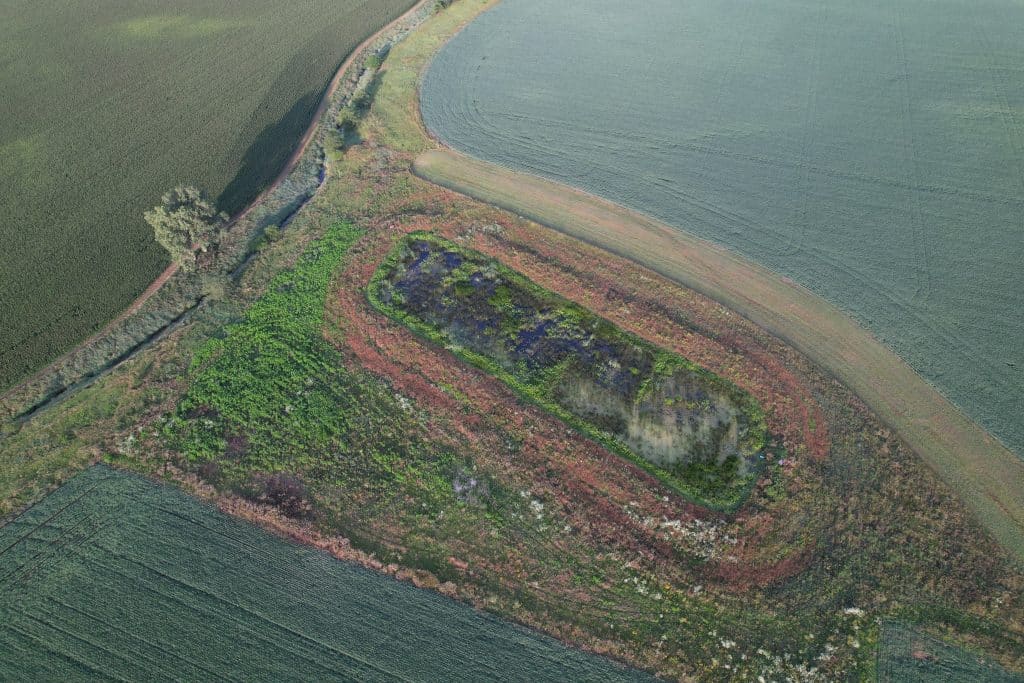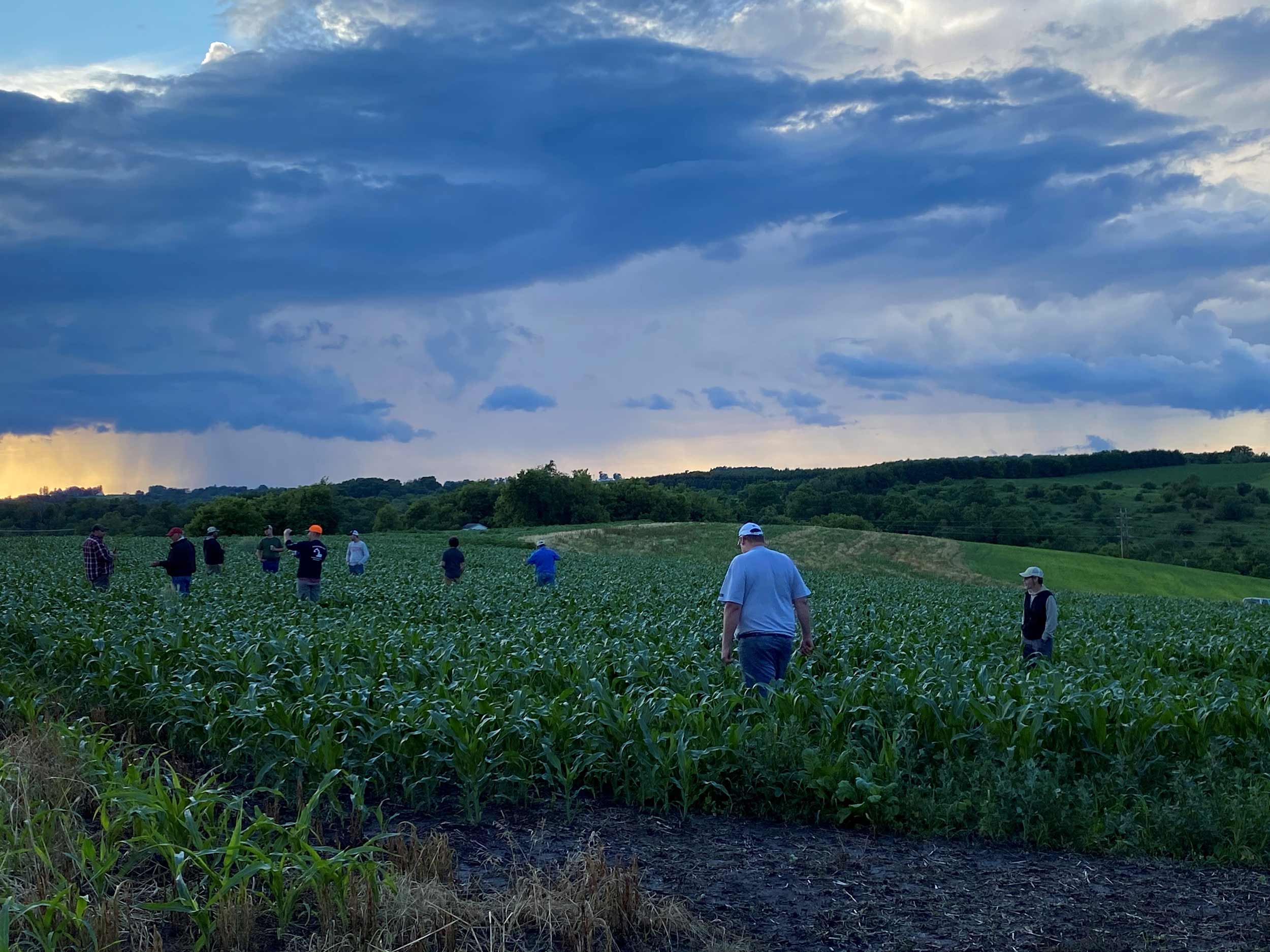Funded Project
2021 | Vermillion-Illinois Watersheds
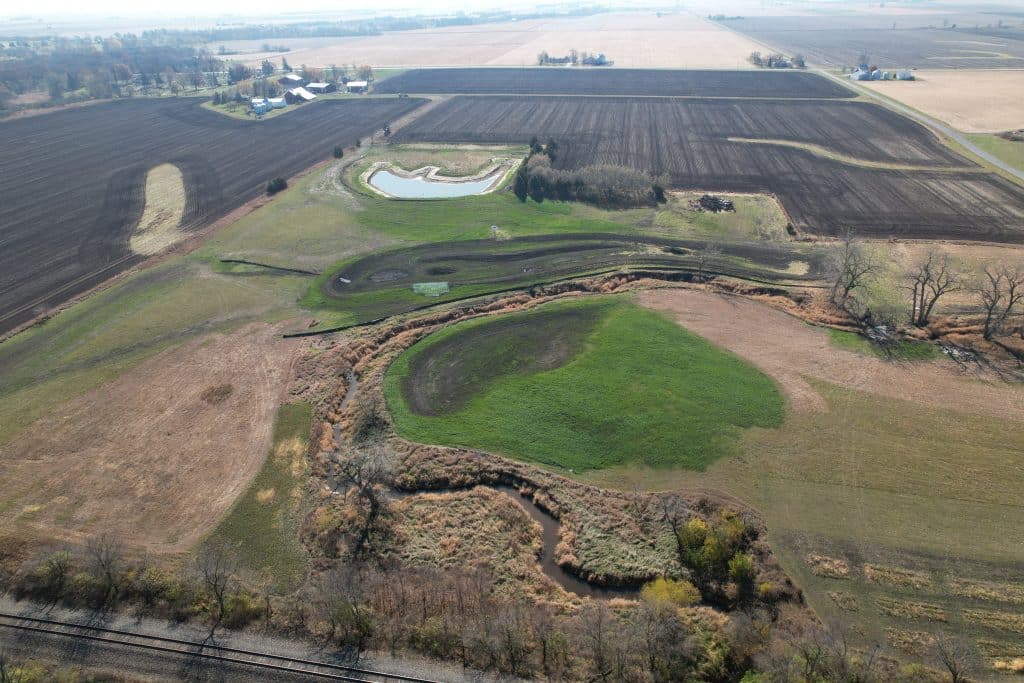
Contact
Applicant Organization: The Wetlands Initiative
Contact: Vera Leopold, Jill Kostel
Email: vleopold@wetlands-initiative.org, jkostel@wetlands-initiative.org
Project
The Wetlands Initiative (TWI) project, funded by the Fishers & Farmers Partnership from August 2021 through July 2023, disseminated the use of small tile-treatment wetlands on working row-crop farms to address the urgent issue of nutrient runoff that flows into waterways and impacts streams. Through technical assistance, collaborative landowner and farm adviser outreach, and the sharing of water quality monitoring results, we sought to promote this conservation practice across two priority watersheds in north-central Illinois. 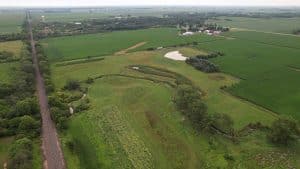
During the FFP funding period, TWI built two new tile-treatment wetlands on private farms in Livingston and Marshall-Putnam counties and held multiple public field events at these sites. The U.S. Fish & Wildlife Service’s Partners for Fish and Wildlife Program in Illinois, Illinois Land Improvement Contractors Association, Pheasants Forever, and Springfield Plastics partnered to support this wetland implementation. TWI also initiated or built on collaborations with Ducks Unlimited, the Illinois Sustainable Ag Partnership, local Soil and Water Conservation Districts, and local NRCS staff to expand our outreach and technical assistance work. In total, TWI reached 315 farmers and ag-sector advisers and increased their awareness of tile-treatment wetlands through field events and built relationships with 22 public and private advisers who are now helping us spread the word about the value of wetlands for water quality improvement.
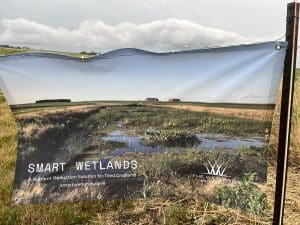
A “smart” wetland is specifically situated and constructed on a working farm, usually on marginal or less-productive ground, and designed to naturally reduce nutrient runoff. These small wetlands are placed along ditches or streams on a farm without taking large amounts of farmland out of production. Several TWI-designed wetland sites are being monitored for nutrient removal effectiveness, and early results indicate that the wetlands can remove up to 85% of the nitrate from tile drainage. This edge-of-field conservation practice aligns with Illinois’ Nutrient Loss Reduction Strategy.
By reducing sedimentation and nutrient runoff, farm-based wetland projects improve floodplain and instream habitat, and in turn help to improve native fish and freshwater mussel populations, which are priorities of the Fishers and Farmers Partnership. In addition to the benefits that the wetlands provide for the watershed, the wetlands provide benefits to the farmer/landowner. The farmer/landowner gets a sense of pride in helping the environment and his or her local watershed. The wetlands also provide increased wildlife habitat and viewing on farms. Wildlife such as deer, waterfowl, migrating birds, turtles and frogs quickly utilize these newly formed wetlands.
The Wetlands Initiative is advancing the use of small tile-treatment wetlands on working row-crop farm properties to address nutrient runoff to waterways. This project supports implementation of first-adopter wetland sites on private farmland in multiple counties, collaborative farmer outreach and technical assistance, and monitoring of the wetlands’ nutrient removal effectiveness in north central Illinois. Partners include: farmers, USDA-NRCS, USFWS, National Fish & Wildlife Foundation, Illinois Corn Growers Association, University of Illinois, McKnight Foundation and others.
